Leica D Vario-Elmarit 14-50 mm f/2.8-3.5 Asph. Mega O.I.S.
3. Build quality and image stabilization
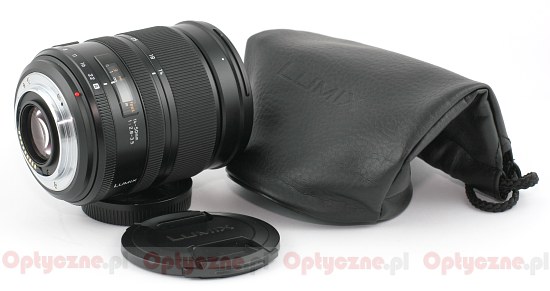 |
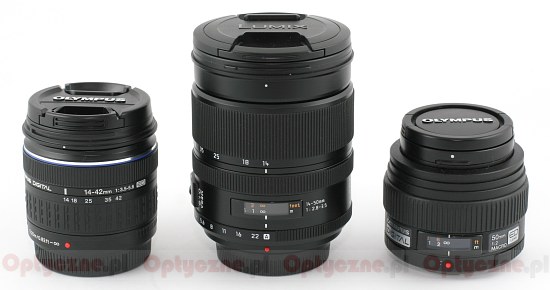 |
The lens extends slightly on zooming from 14 to 50 mm but there's no wobbling of the inner lens tube which is very solid. You should expect, though, that this working mode might cause dust ingress inside the optical construction.
When it comes to the inner construction of the lens we deal here with 16 elements in 12 groups. Two elements are double-sided and aspherical. The combination of other two elements in the group right in the middle of the system is involved in the stabilization work. Apart from that we get an aperture with 7 diaphragm blades which can be closed down to f/22 and a non-rotating filter thread, 72 mm in diameter.
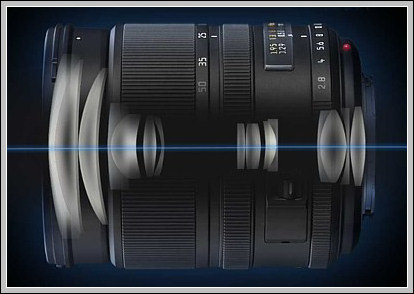 |
Please Support UsIf you enjoy our reviews and articles, and you want us to continue our work please, support our website by donating through PayPal. The funds are going to be used for paying our editorial team, renting servers, and equipping our testing studio; only that way we will be able to continue providing you interesting content for free. |
- - - - - - - - - - - - - - - - - - - - - - - - - - - - - - - - - - - - - - - - - - - - - - - -
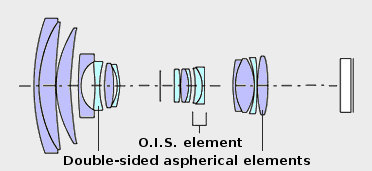
MEGA O.I.S stabilization system uses built-in gyrosensors which allow the Venus Engine Plus processor to detect the movements of the camera with the frequency up to 4 000 times a second; that’s why the camera’s movements compensation is supposed to be exceptionally precise.
As the Leica 14-50 mm was tested using the Olympus E-510 body with the stabilization of the sensor we had an opportunity to conduct an interesting experiment – we decided to compare the efficiency of the lens’ stabilization, the sensor’s stabilization and both these mechanisms joined. Of course such a comparison makes sense for the 4/3 system only and any extrapolation of results to other systems would be baseless.
The picture below shows some scene crops which were photographed at 35 mm with the exposure time priority. We used speeds from 1/100 of a second to 1/3 of a second, taking for each of them 7-9 expositions and choosing an average result. Four series of photos were taken: with both stabilizations switched off, with the lens’s stabilization switched on only, with the sensor’s stabilization switched on only and finally, with both stabilizations switched on.
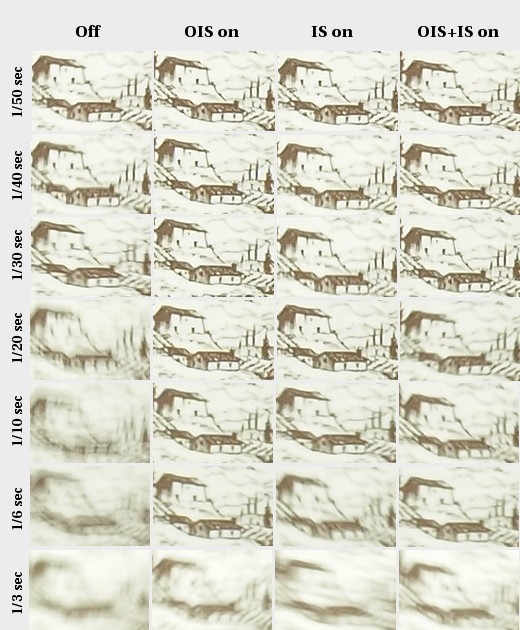
Minimal traits of blur without stabilization we see already at 1/50 of a second. The similar effect you can get using speeds at the level of 1/6 of a second with the lens’s stabilization on. It means that the MEGA O.I.S. stabilization system is as efficient as a bit over 3 EV. In the case of the sensor’s stabilization the results are a bit worse and they oscillate at the level slightly over 2 EV, which is more or less in accordance with the results of 2.3-2.7 EV which we got during our E-510 test. What’s interesting, the joined forces of the sensor’s and the lens’s stabilizations give worse effects than using one or the other stabilization system separately. Anyway our results provide a quite substantial argument for the L1 + the Leica set compared to e.g. the E-510 + the 14-54 mm tandem.






